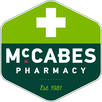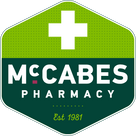The Best La Roche-Posay Products for Acne
La Roche-Posay is renowned for its highly effective yet gentle skincare range designed to tackle a variety of skin types, problems and concerns. Their products include cleansers, toners, moisturisers and more, all of which contain their signature thermal spring water.
This guide will focus on one common skin complaint which many of us will have experienced at some point in our lives: acne. It will look at some of the causes and symptoms of acne, skincare breakdown ingredients which actively target acne, and highlight La Roche-Posay’s best products for battling this issue. Click on one of the links below to jump to that section:

What causes acne?
There are many different causes of acne. Sometimes the skin produces excessive amounts of sebum, which is oil necessary for healthy skin function. Excess sebum and build-up of dead skin cells can lead to clogged pores and hair follicles which can then become infected and inflamed, creating painful, raised bumps.
Bacteria on the skin might also contribute to acne, and this could occur as a result of poor hygiene habits or inadequate cleansing. For example, if traces of makeup remain on the skin each day, this can lead to pores becoming clogged with bacteria.
Hormones often play a role, too. Acne is a skin condition which affects many teenagers and young adults due to changing hormone levels during puberty and adolescence. This can cause excessive production of sebum, subsequently blocking pores and producing blemishes.
Symptoms of acne
Blackheads are common with acne. These are pores clogged with sebum which oxidises and turns a greyish colour. Whiteheads also occur when pores are blocked, except the pores close up creating tiny white or flesh-coloured bumps. Papules are firm bumps beneath the skin which occur when oil, bacteria and dead skin cells are pushed deep into the skin and create inflammation. Papules often turn into pustules when they begin to produce a yellowish fluid called pus.
Cysts and nodules are the most extreme symptoms of acne. Like papules, nodules do not have a visible head but can be seen on the surface of the skin and are also very inflamed and sore. Cysts do have a visible head and can look like large boils.
Skincare ingredients which target acne
When looking for skincare products that help to control and reduce acne, be sure to check for ingredients which are known to help control oil production, minimise clogged pores, and tackle bacteria and inflammation.
Retinol is similar to adapalene, only it is much milder and therefore often found in skincare products that do not require a prescription. It works to regulate the turnover of skin cells and can therefore help to clear away dead skin cells which contribute to clogged pores. By helping to keep pores clear, retinol can have an additional benefit of allowing other topical acne treatments to penetrate the skin more effectively.
Niacinamide is a form of Vitamin B3 which works to support normal skin cell function and repair. When applied topically it can help to improve the skin's natural protective barrier, reduce inflammation and inhibit oil production. It's a relatively gentle ingredient which makes it ideal for reducing acne symptoms in those with sensitive skin.
Salicylic acid works to dissolve the sebum, bacteria and dead skin cells which clog pores. It is a very common ingredient in many skin care products designed for blemishes and acne, but only relatively low strengths are included in products available without a prescription. Higher-strength salicylic acid is available on prescription because of a risk of irritation. Lipo Hydroxy Acids (LHAs) are a derivative of salicylic acid and work in much the same way, only they tend to be a little gentler and therefore more suitable for sensitive skin.
Benzoyl peroxide is an antiseptic which works to remove bacteria from the skin. It is often prescribed by doctors as an acne treatment but might be included at low strengths in some skin care treatments. It can irritate the skin, particularly at high strengths.
Hyaluronic acid can be helpful for treating acne because it works to improve the skin's natural barrier, thus protecting the skin against bacteria that might lead to blemishes. Plus, it can increase hydration without leaving a heavy residue on the skin which might block pores.

La Roche-Posay Effaclar range
La Roche-Posay has created a full range of products for oily and blemish-prone skin called Effaclar, allowing you to build a full skincare regimen that can help to reduce the severity of acne. Effaclar might be particularly useful to those taking prescribed medication for acne which has caused the skin to become very dry and sore, something which is not uncommon with many acne treatments. Effaclar products work to control oil and clear pores without damaging the skin's natural barrier.
Step 1 - Cleanse with Effaclar Purifying Cleansing Gel
Lather this gentle gel cleanser between wet palms, apply to the face and massage into the skin before rinsing away. It has a simplified formulation to thoroughly cleanse the skin without causing irritation.
Step 2 - Tone with Effaclar Micro-Exfoliant Astringent Lotion
Apply this toner to the skin after cleansing with a cotton pad. It contains micro-exfoliant LHA to thoroughly remove any lasting traces of impurities or bacteria and help prevent blocked pores. It also works to reduce pore size to prevent future blackheads and whiteheads.
Step 3 - Control oil with Serozinc Facial Mist Toner
This aerosol spray contains zinc sulphate to absorb oil and mattify the skin. Close the eyes, spray the aerosol onto the face and wait a few minutes for it to absorb.
Step 4 - Target individual blemishes with Effaclar A.I. Breakout Corrector
With its high concentration of LHAs and niacinamide, this targeted breakout cream can be applied directly to individual blemishes to reduce their appearance and help to prevent lasting marks as they heal.
Step 5 - Moisturise with Effaclar Duo+
Even oily skin needs hydration to stay healthy, so it's important to finish your skincare routine with a lightweight moisturiser. Effaclar Duo+ contains niacinamide and salicylic acid which target acne while providing 24-hour hydration. Within 12 hours of application, blemishes appear less red and inflamed, and within four weeks of twice-daily use, the blemishes reduce by 52%.
Frequently asked questions
How long does it take for acne to improve?
It can take weeks or months for acne to improve depending on the way it is treated, the skincare products used, the severity or causes of the acne, and your skin type. Some products might help to soothe inflammation and redness immediately after application, but it usually takes longer for the severity and frequency of breakouts to diminish.
How do you reduce the appearance of acne scars?
Acne scars often improve over time, but some products can help to improve skin texture and uniformity to reduce the appearance of scars. La Roche-Posay Pigmentclar Serum works to reduce the appearance of pigment flaws and might help to minimise the severity of scars caused by acne.
How do you help control oily skin?
Oily skin can be controlled with products that contain niacinamide and salicylic acid, both of which help to control sebum production. You can also minimise oiliness by avoiding moisturisers that are too thick or heavy and choosing products designed specifically for oily skin such as the Effaclar range by La Roche-Posay.

